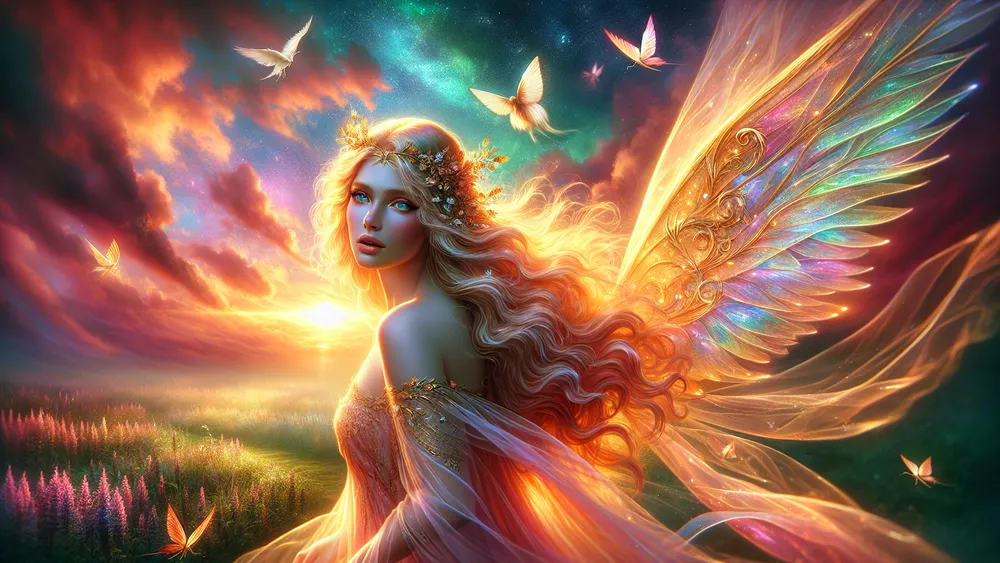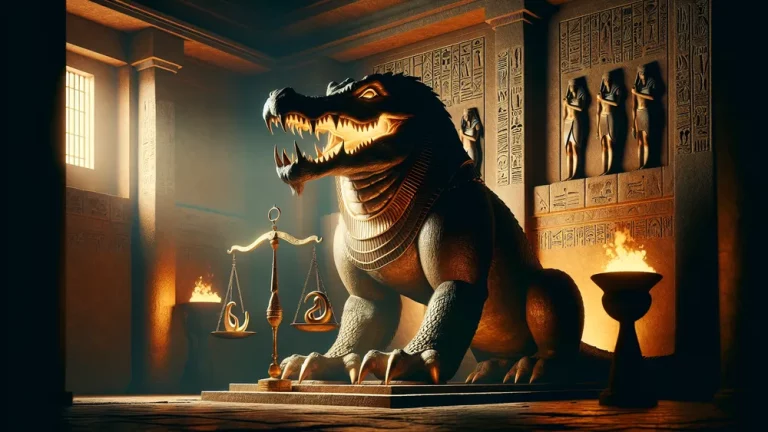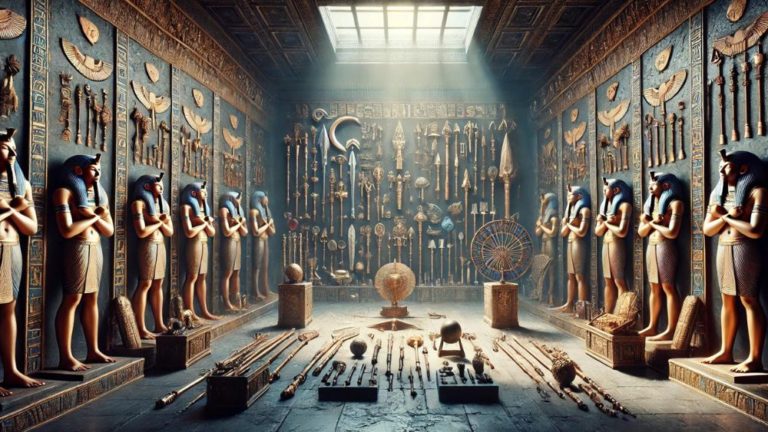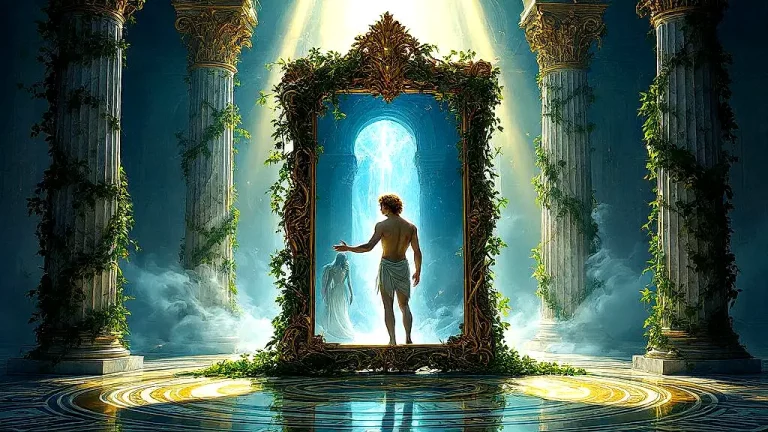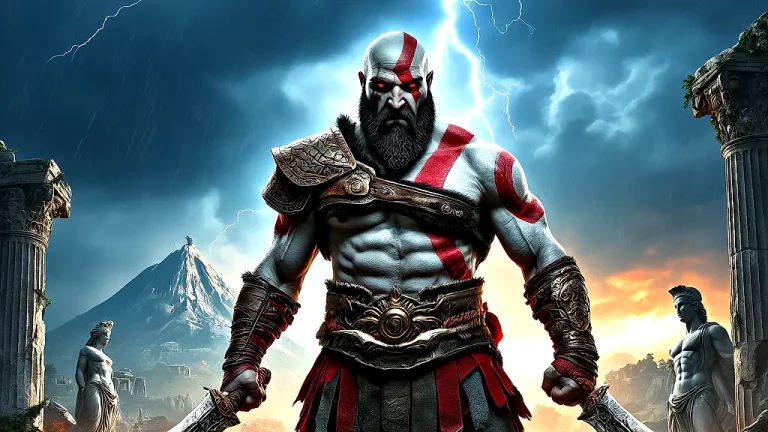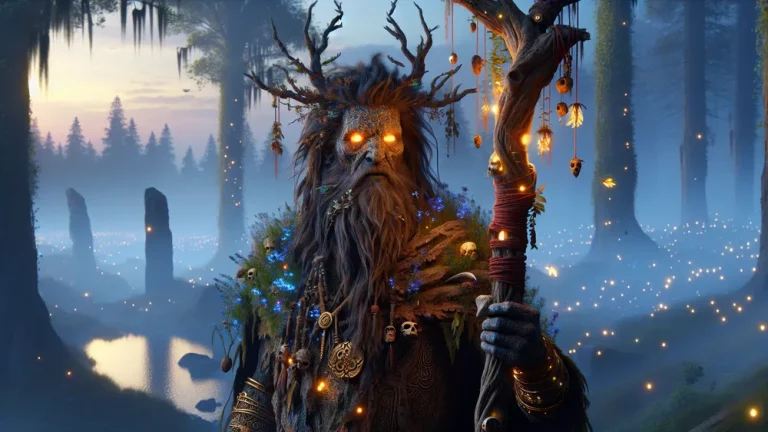Eos: Greek Goddess Of The Dawn And Daughter Of Titans
Within the extensive picture of Greek myths, Eos appears as a bright figure that is the morning, signaling the start of each day. Think about waking and finding the gentle morning light, something that means warmth and hope, similar to what Eos did in old stories.
Key Points:
- Eos is the Greek goddess of the dawn.
- She is the daughter of Titans Hyperion and Theia.
- Eos has two siblings: Helios, the sun god, and Selene, the moon goddess.
- Eos brings morning light and ends the darkness of night.
- Her love story with Tithonus highlights the challenges of immortality.
- Eos is often depicted with rosy fingers or wings, driving a chariot.
- She has children, including the winds and stars, showing her connection to nature.
As the goddess of the morning, Eos was honored for how she got rid of the night’s darkness, meaning starting over again and promises of fresh starts. Her story, which has themes of love, living forever, and godly tasks, means a fascinating insight into what ancient Greek people believed and valued.
Throughout this piece, her beginnings, her connections to other sky gods, and her lasting presence in stories and art will be seen, giving a full view of her importance in the Greek gods’ assembly.
Eos: Overview and Key Facts
| Key Aspect | Info |
|---|---|
| Name | Eos |
| Area | Goddess of the Dawn |
| Parents | Daughter of Titans Hyperion and Theia |
| Siblings | Helios (Sun), Selene (Moon) |
| Meaning | Renewal, Hope, Starting Over |
| What She Does Every Day | Bringing morning light, making dark go away |
| Shown As | Often shown with rosy fingers or wings, driving a chariot |
| Famous Stories | Love story with Tithonus, part in the Trojan War |
| Children | Mother to the winds (AnemOI) and stars, through different partners |
| Importance in Culture | Highly thought of in ancient Greek beliefs, meaning change from night to day |
Where Eos Comes From
If you really want to know Eos in Greek mythology, it’s important to look at her beginnings and family ties. This gives a basis for what she means as the goddess of the dawn.
Eos’s Family Tree
Eos, the goddess of the dawn, comes from a family line of the Titans, who are very old gods in Greek mythology. Her parents are Hyperion and Theia, who both played big parts in the universe. Hyperion, always linked with light, is sometimes called the “High One” which means his high rank among the Titans.
But Theia, however, is connected with sight and clear blue sky light. Together, they are a strong pair, and their children are gods of the sky. Eos has two siblings, Helios and Selene, making up this powerful family. Helios, the sun god, is shown as controlling a chariot that teaches daylight to everyone.
Selene, the moon goddess, similarly travels through the night sky, bringing the dark a soft light. This group of gods means the important parts of daytime and nighttime, each having a key part to keep the universe balanced.

To learn about Eos’s family, look at this list of her close family and what they rule:
- Hyperion: God of light, Eos’s dad.
- Theia: Goddess of sight and shining sky, Eos’s mom.
- Helios: Sun god, Eos’s brother.
- Selene: Moon goddess, Eos’s sister.
This sky family means how connected natural things are and also shows how vital every member is in the big picture of Greek stories. By looking at Eos’s family line, you will see the complex links that shape myths and the gods that control the skies.
Eos, the dawn goddess, comes from a powerful family of Titans, including her parents Hyperion and Theia, and her siblings Helios and Selene, each playing important roles in the balance of day and night.
What Eos Means in Greek Myths
About Greek stories, Eos has a vital job as the goddess of the dawn. This gives her the power to lead in the new day. She’s like an alarm that wakes everyone up, often shown with rosy fingers in tales.
Every morning, from her home at the edge of Oceanus, the great river surrounding the earth, she sets out to go across the sky in her chariot pulled by fast horses. This trip, besides bringing light to everyone, marks night changing to day, which is needed for life.
In pictures, Eos often appears with wings, meaning her fast move across the sky, and sometimes a torch, standing for the light she gives. Her place in stories and art means she is important in the order of nature because she plays a big part in the universe’s cycle.
Eos’s meaning goes beyond just starting the day; she also stands for renewal and hope. The dawn shows the end of night and the start of a new day. Eos means fresh starts and chances for change. This meaning is clear in her stories, where ideas of new life and repeating life are common.
Each day’s morning light can be seen as life starting again, and the new chances that come daily. Thus, Eos reminds us of change and the hope at the start of new things. Knowing Eos’s role and meaning shows you what the old Greek culture valued, where dawn was more than a time of day but also a strong sign of life’s ongoing cycle.

Myths and Legends About Eos
By looking closer at Eos’s character and her influence, look through the myths and stories that have her in them. This means her complicated ties and her impact on the world of Greek mythology.
Eos and Tithonus: Love and Its Challenges
The story of Eos and Tithonus is a sad tale about love’s difficulties and unexpected issues from living forever. Eos liked how Tithonus looked, a prince from Troy, and fell for him strongly. Wanting to be with Tithonus forever, Eos asked Zeus, the chief god, to let Tithonus live forever. But Eos forgot a key part: she didn’t ask for him to stay young. This mistake would cause problems in their relationship.

As time went on, Tithonus was alive, but he aged and became weak. Eos stayed forever young and full of energy. Tithonus just got older and weaker over time, becoming a shadow of who he was. This difference between them showed what happens when things go wrong, as Tithonus’s forever life turned into a burden instead of a gift.
The myth teaches why we should think about what we want, meaning how a wish can become something difficult and sad. This story also tells you about love and the human experience. It points out that without staying young too, living forever can cause pain and loneliness. This myth asks you to consider love’s complex nature and what might happen if we try to change what’s natural.
Through Eos and Tithonus, the story shows that love, while strong and changing, needs to be met with good judgment and careful thinking to avoid problems.
Eos’s Lovers and Kids
Eos, famous for her looks, had many important partners in Greek myths, playing a big part in her various relationships with others. One well-known partner was Ares, who was the god of war, and their relationship was intense but stormy. But her marriage with Astraeus, who was the dusk Titan god, led to some important kids.
Eos and Astraeus had the four winds: Boreas, the north wind person; Notus, the south wind person; Eurus, the east wind; and Zephyrus, the west wind. These winds were not just weather; they were gods too, all with their own traits and stories.
This means the link from Eos to the winds, and it shows how she connects with nature, linked closely to the earth’s weather and times of year.
Eos and Astraeus also had other space-related kids like stars and Eosphorus, the morning star, which people connect to Venus. These children mean Eos’s part between night and day, as stars and the morning star come out when night turns to day. Her kids’ importance is more than in stories; they stand for how space and earth’s seasons are tied together. To picture Eos’s family, here is a list of her important partners and children:

- Ares: God of war, lover of Eos.
- Astraeus: Titan god of the dusk, husband of Eos.
- Boreas: North wind, son of Eos and Astraeus.
- Notus: South wind, son of Eos and Astraeus.
- Eurus: East wind, son of Eos and Astraeus.
- Zephyrus: West wind, son of Eos and Astraeus.
- Eosphorus: Morning star, child of Eos and Astraeus.
- Stars: Space children of Eos and Astraeus.
Through these ties and kids, Eos’s mark is all over myths, meaning her big role in world’s order and weather that make up the earth.
Eos and Her Part in the Trojan War
How Eos took part in the Trojan War, it is deeply linked to her son Memnon, a brave fighter and ruler of Ethiopia, who helped the Trojans. Memnon, like many heroes back then, was pulled into the big conflict in the old world, and his skill in battles was well-known.
Yet, his end came when he met Achilles, the top Greek fighter, in a fight that ended his life. Eos’s sadness over Memnon’s loss is a critical part of the story, telling about a mother’s deep sadness for her child.
Think of how sad a parent is who lost a child they love, a sadness that applies to any time or culture, and you can know Eos‘s pain. In myths, her tears are said to be the morning dew, a sign of her forever mourning.
This story not only meansEos’s strong feelings for her son, but also means how gods had human-like qualities, making them relatable in the stories of Greek myths.
Eos’s deep sorrow for her son Memnon, who died in battle against Achilles, shows the human-like feelings of gods in Greek myths.
What Eos Stands for and How People Worshipped Her
To really understand Eos’s place in Greek mythology, it’s important to think about the symbols and practices linked with her, which indicates how ancient people respected her as a divine example connected to the dawn and new beginnings.
Eos’s Symbols
Eos is, as the dawn goddess, known for several symbols that capture her nature and part in Greek stories. Think of how these symbols are specific things about Eos, each indicating a different part of her divine character. A chariot is perhaps the most famous symbol connected to Eos, because it means her daily travel over the sky, beginning the dawn. This chariot, often pictured as bright and sunny, indicates her part in bringing light to the world. Roses, another symbol related to Eos, represent beauty and renewal, like each new day’s fresh start. Saffron, a spice known for bold colors, means the warm shades of morning light, indicating her link to the start of days. For a better picture of these symbols, see this list:

- Chariot: Means Eos’s journey across the sky, bringing dawn.
- Roses: Stands for beauty and renewal, like the new day.
- Saffron: Stands for the warm sunrise colors, showing her dawn link.
Through these symbols, Eos’s impact appears in the natural world, which means her important part in the day and night cycle.
Worshipping Eos and Her Cults
In ancient Greece, honoring Eos wasn’t as common as with some other gods, but she was still important as the one who brings dawn. Think about starting your day by thinking about the sunrise, which is similar to how people from the past might have respected Eos. There weren’t major temples just for her, but people often honored Eos with other gods connected to sky events.
Practices for Eos probably included offerings at dawn, because that means being thankful for the new day she starts. People burned incense or offered flowers, especially roses, which were closely tied to her. Also, these actions mean the dawn is a time to start over and have hope, ideas that people understand in many cultures and religions.
The role of dawn gods like Eos in old beliefs is big. Dawn means the change from night to day, a strong sign of new starts. In many old societies, the dawn was a holy time, when divine presence was strong. Eos, representing this time, showed these ideas, making her worthy of admiration.
Her role as a dawn goddess means how nature’s patterns and people’s lives are connected, since the sunrise reminded everyone of order in the world. By respecting Eos, people back then knew they depended on natural rhythms, seeing dawn as a special gift that brought light, warmth, and chances of a new day.
Eos in Art and Stories
To get a better idea of Eos’s impact, by looking at how she is in different types of art and stories, which means a long-lasting interest in her mythical image.
Eos in Ancient Artworks
In old Greek art, people often see Eos with elegance and movement, which means her role as the dawn goddess. Think about modern celebrities and how they appear in different media, each image focusing on different parts of who they are; similarly, Eos appears in different ways like pottery, sculptures, and paintings.
On Greek pottery, she is frequently seen driving her chariot across the sky, a design that means her daily job to start the dawn. Sculptures usually capture her in active poses and sometimes with wings, showing her fast movement through the sky. Paintings might see her with rosy fingers, a detail that means her link to dawn.
These art forms often cover themes of starting again and light, showing her important part in nature’s cycle and the hope she brings each new morning.
Eos in Classic Writings
In ancient literature, Eos is made clear by writers like Homer and Hesiod, much like how a character in a book appears in different parts and views. Homer, often in his poems “The Iliad” and “The Odyssey,” mentions Eos as “rosy-fingered,” a word that means her part in starting the dawn with the first light.
This repeated word not only means her beauty but also her important job in the daily cycle. Hesiod, in his “Theogony,” gives an account of Eos, which places her in the group of Greek gods and shows her family as the daughter of Titans Hyperion and Theia.
These writings have greatly shaped how we see Eos, showing her as a sign of renewal and ongoing, making sure she remains important in Greek stories.
Eos, described by writers like Homer and Hesiod, represents dawn and renewal, highlighting her beauty and vital role in the daily cycle as a daughter of Titans.
The Pantheon of Greek Titans
The Greek Titans are like the very old builders of the universe, much like early ancestors who set things up for those who came after. The Titans, including Cronus, Rhea, and Hyperion, had important roles in making and ruling the universe before the rise of the Olympian gods.
They were strong gods that are tied to elemental forces and natural things, showing the basic, wild parts of the world. When you learn about the interesting stories and actions of these old figures, you can check out a full list of all Greek Titans for details on their myths and histories.
FAQs
1. Who were Eos’s parents and siblings?
Eos’s parents were the Titans Hyperion and Theia, and her siblings were Helios, the Sun, and Selene, the Moon.
2. What is the story of Eos and Tithonus?
The story of Eos and Tithonus revolves around Eos’s love for the mortal Tithonus and her request for his immortality, which tragically resulted in him aging eternally without the relief of death.
3. How is Eos depicted in ancient Greek art?
Eos is depicted in ancient Greek art as a radiant figure often shown with wings, driving a chariot across the sky to herald the dawn.

